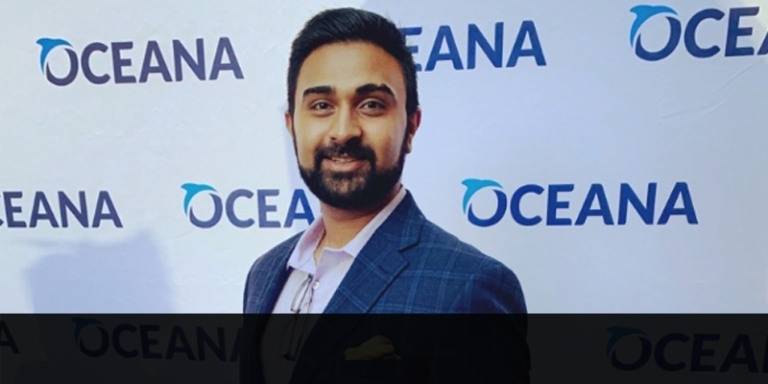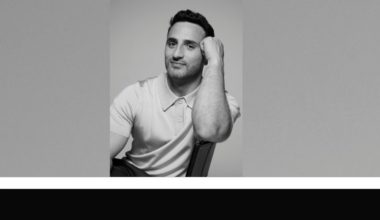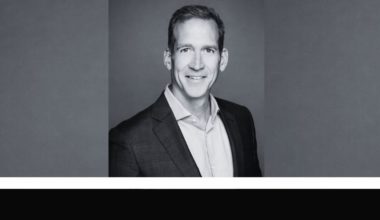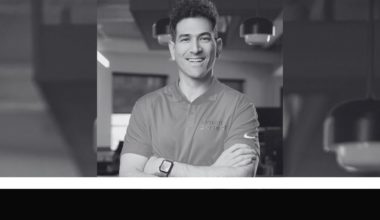Rudy Patel is a 29-year-old entrepreneur who immigrated to the United States when he was 8 years of age. He is a person who cannot sit still and loves to start new ventures and grow them. Patel finds himself to be extremely driven towards innovation and creativity while editing himself to ensure that the content he puts out in the world is that which he can be proud of. He claims that he may not be perfect, nor does he strive to be but he does put in his 100% and tries to do his best in all aspects of his life. Patel does not like to settle for things; he enjoys striving for the next best thing. If he is unsure of something, he picks up a book or searches online to learn more about that topic. Patel is a firm believer that the best ROI comes from investing in oneself. Patel likes to like by the following principles:
“I am not motivated because motivation comes and goes, instead I am driven because my drive in what I want out of my life is here to stay and keep pushing me forward”
As well as
“I do not set goals, I set milestones. While I do look forward to the destination, I make sure that I enjoy each mile of the journey.”
Please tell us a little bit about your company – what is beyondGREEN biotech, Inc. all about?
beyondGREEN biotech, Inc. is a business dedicated to manufacturing compostable alternatives to harmful plastic products in efforts of aiding in the prevention and reduction of plastic pollution globally. beyondGREEN biotech, Inc. is one of the only manufacturing businesses in the United States which produces products from its own patented and certified compostable material blend through Injection Molding and Extrusion Blown Film Manufacturing. While it provided branded products to its customer network, beyondGREEN also offers custom manufacturing services to the public and businesses who are interested in creating a compostable product.
In addition to manufacturing compostable products, beyondGREEN also works on creating green-tech, such as its own Home-Use Pet Waste and Organic Waste Composter which turns waste into nutrient-rich fertilizer within 5 days. This technology was created in efforts of reducing waste flow to landfills. Along with the composter, beyondGREEN also has many other green-tech innovations in the works and will be launching them in the near future. Our mission is simple; we strive to provide consumers with an alternative to environmentally harmful plastics.
Tell us a little bit about your background and how you started your company?
I was born in India and immigrated to the states when I was 8 years of age. Since I was a little boy, I have always seen my family run and operate their own businesses. Growing up in such a family gave me the desire of becoming an entrepreneur myself. In 2016, upon graduating with my BA in Finance from California State University, Fullerton, I brainstormed with my father on a new business venture. My father had recently developed corn-based polymers and had asked me what product we can develop with his new material technology. My head immediately went towards pet waste bags (I am a hiker and always see plastic pet waste bags left behind and also worked at a pet store during college for a few years so knew there was a demand for the product). My father, hearing my idea agreed knowing that this would be a great way to set foot in the pet industry (our product was originally known as bioDOGradable Bags). Within 2 years, bioDOGradable Bags gained tremendous momentum and we decided to expand our product line and penetrate other markets. With this plan in mind, we knew that we would need to move our manufacturing from India to the US and so we did.
We opened our first manufacturing plant in Southern California in Dec of 2018 under the name beyondGREEN. Within a year and a half, we ran out of manufacturing and warehousing space and had to expand into a larger facility to cater to our demand. We now not only sell pet waste bags, but have also penetrated the grocery bag industry, produce storage as well as provide custom manufacturing services to our customers for their products using our same certified compostable material recipe. We are one of the only businesses in the United States that has a hybrid manufacturing model which manufacturers compostable products using extrusion blown film manufacturing as well as compostable injection molded products. All of the products we manufacturer are designed to decompose with a given timeframe (depending on the use of the product) in an aerobic or anaerobic environment and whether in industrial or backyard setting.
What are your plans, how do you plan to grow this company?
We plan on growing this company by vertically integrating our manufacturing process. The vertical integration process for starts from growing corn which can be used to produce our polymers to establishing industrial composting facilities which will aid in the decomposition process of our products along with other compostable products. There are many benefits to beyondGREEN to vertical integration for beyondGREEN, here is the breakdown:
Corn Farming – Only corn byproducts (remains) are required for us to manufacturer our polymers, this leaves us with the healthy parts of the corn to supply to the food industry.
Manufacturing Polymers – This allows for us to control our costs on polymer manufacturing as we will be able to manufacturer this inhouse. Once we get the machinery installed, we will also be able to manufacturer polymers for other businesses as well as supply polymers in the market.
In-House Manufacturing of Products – Already established and allows for us to control what we would like to manufacturer and continue to add new machinery to cater to new markets and take control on manufacturing costs.
Domestic Distribution Warehouses – This allows for us to set a few warehouses throughout the country in efforts of lowering logistic costs as well as reduce carbon emissions.
Set-Up Industrial Composting Facilities – This falls in line with our mission of reducing waste flow to landfills. By composting waste, we will be able to create nutrient-rich fertilizer which we can offer to organizations and businesses for vegetation use.
What was the biggest problem you encountered with your business and how did you overcome it?
The biggest problem we encountered would have to be catering to demand once exceeding manufacturing capacity. This was a very big issue for us for months (I would say close to 8 months) as all of a sudden, the demand for our product went through the roof. Our forecasts consisted of steady growth and therefore we were not anticipating a sudden burst in sales. We were running at full capacity at 6 days a week, 24 hours a day to keep up with demand.
To cater to this new demand, we would need to move into a facility 5 times the size of the one we were in and purchase multiple new machines. This required a lot of upfront capital which we did not necessarily have but knew we would have to manage the funds somehow or we would lose sales and credibility. Knowing that, we decided that it was time to raise capital through Angel Investors, and so we did. The investments we received helped us overcome our problem and now our infrastructure is set up to cater to manufacturing 100’s of millions of product pieces annually.
What were the top mistakes you made starting your business and what did you learn from them?
The biggest mistake we made when starting beyondGREEN (at the time bioDOGradable Bags) was relying on offshore manufacturing. Though the costs of manufacturing overseas are less than that of manufacturing in the US, the quality and reliability is extremely lacking. Whether the offshore plant is yours or not, no matter how much training you do, it is very hard to implant US quality standards into individuals.
Also, holidays in other parts of the world are crucial to their respective cultures and you have to respect individuals working for you overseas by allowing them to take the necessary days off which affect production schedules. We were not happy with the overseas manufacturing standards and reliability overall and therefore to overcome this problem we moved all of manufacturing to California, US.
How do you separate yourself from your competitors?
We are able to separate ourselves from our competitors as we are one of the only businesses in the sustainability product manufacturing industry which has its own blend of compostable polymers along with a branded product line and most importantly a USA based manufacturing facility.
What is one thing that you do daily to grow as an entrepreneur?
The one thing I do daily to grow not only as an entrepreneur but also as an individual in read and educate myself. Whatever topic I am interested in at the time, I will pick up as many books as I can and educate myself on that particular topic. I am a firm believer that the best ROI comes from investing in yourself and therefore I strive to learn and educate myself daily.
What are three books or courses you recommend for new entrepreneurs?
The three books/courses I recommend are:
- Book: Chop Wood, Carry Water by Joshua Medcalf – this book teaches you the importance of repetition, consistency, and persistence and how those things will help you master your art.
- Book: Can’t Hurt Me by David Goggins – this book explains how to keep on pushing through no matter the adversity you are facing and become a stronger you from the inside.
- Course: HubSpot Academy: Digital Content Creation Certification Course – Marketing and advertising are the core of a business and this course provides you with tools and tricks on how to really market your business in today’s digital world.
What has been your most effective marketing strategy to grow your business?
Our most effective marketing strategy has been social media marketing wherein we work to educate our network on the true value of plastic-free products and how not to be misled by false advertisements of products which claim to be environmentally friendly. In addition, we focus on staying extremely connected to our customers. One important thing to remember is that if your customer or fan has taken the time out of their day to ask you a question or write a comment, you need to find the day to properly respond to them. Each comment or question is equally important!
If you only had $1000 dollars to start a new business, knowing everything you know now, how would you spend it?
This is a great question as I am currently in the works of creating a new business without using any seed capital. Here is how I am doing it and how I would if I only had $1000 dollars:
I would identify the type of business I wanted; sole proprietorship, LLC, C-Corp, etc…
Given I only have $1,000 and no history of sales for this new business, I would start it out as a sole proprietorship and then convert down the road once revenue starts generating to my satisfaction.
I would ask myself the following before even starting the business:
- What is the problem I am working to solve?
- Who is my audience I am solving the problem for?
- How will my audience react to my solution?
Once you can answer those questions, you are ready to start building the infrastructure.
The first would be:
A website is important and necessary for any new business, but I would not pay anyone to create my website for me. There are so many tools available for a cheap monthly fee which you can use and build your own website by simply dragging and dropping content into the platform.
Some you can look into are:
Next would be:
Marketing Assets are extremely important for advertising your brand, whether these be digital flyers, content for social media, educational materials or simple graphics. You need to ensure that you create many assets but while creating the high quantity you should not sacrifice the quality of your material.
Considering that we only have $1000 in our budget, I would not hire anyone to create my content for me, instead I would take the free courses provided by Adobe and learn Adobe Photoshop and Adobe Illustrator and create the assets myself.
Once you have the assets in place, you are ready to start sales:
This is where it gets tricky, remember any new entrepreneur with limited capital will need to wear multiple hats. This next part involves the sales hat. It is important that your website is properly functioning and that you have all of your marketing assets as well as costing and pricing sheets set in stone before jumping into sales. You will not be able to hire a sales team from the get-go and will need to start cold calling as well as reaching out to your warm leads and spreading your marketing assets digitally before you can even afford to onboard a sales team. This is the part where you will become extremely busy, that is, if you put your full potential to it. Once you start onboarding customers on your own, you can start to onboard individuals to your sales team one at a time.
Ask yourself on how you will compensate your sales team, will you:
- Provide a fixed salary?
- Provide a fixed salary plus commission?
- Provide commission only?
- Provide commission vs. draw?
- Provide commission plus draw?
If you provide commission, what are the commission percentages?
Based on what you choose from the above mentioned, you can work with your budget and onboard new members to your sales team accordingly.
One thing I have learned is that you should always hire sales first and then hire team members in other departments as needed.
You can’t pay your team if there are no sales.
Once your sales team is up and running, now it is your turn to work to really start pushing marketing and create a strong brand awareness which will in return help your sales team acquire new accounts.
All of which I have mentioned before is what I have learned from previous ventures and is the process I am currently following while starting my new business.
What’s your best piece of advice for aspiring and new entrepreneurs?
Be consistent, don’t be let down and be ready to really invest all of your sweat equity into your new business because it will not be easy. Just remember that if it was easy, then everyone would be doing it. One of my mentors who owns multiple successful business and has a net-worth exceeding $450M once told me when he saw me down that it takes 1,000 days for any business to truly get in the green zone.
What is your favorite quote?
“The man on top of the mountain didn’t fall there.”
– Vince Lombardi
How can we get in touch with you?
You can visit my company website beyondGREEN, find me on social media via LinkedIn. You can also email cs@renew-pack.com and rudy.patel@byndgrn.com.
Random Interview: Bo Parfet of Denali Venture Philanthropy: Profound Social Change








